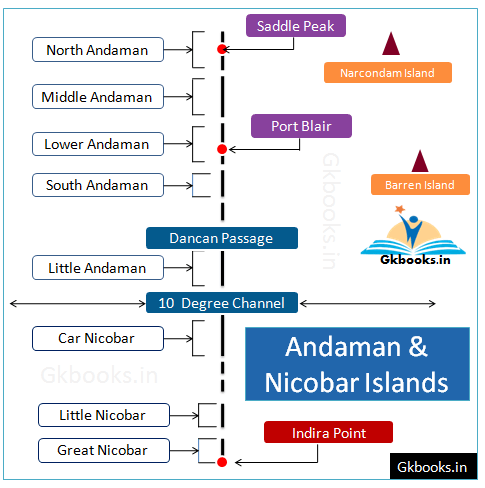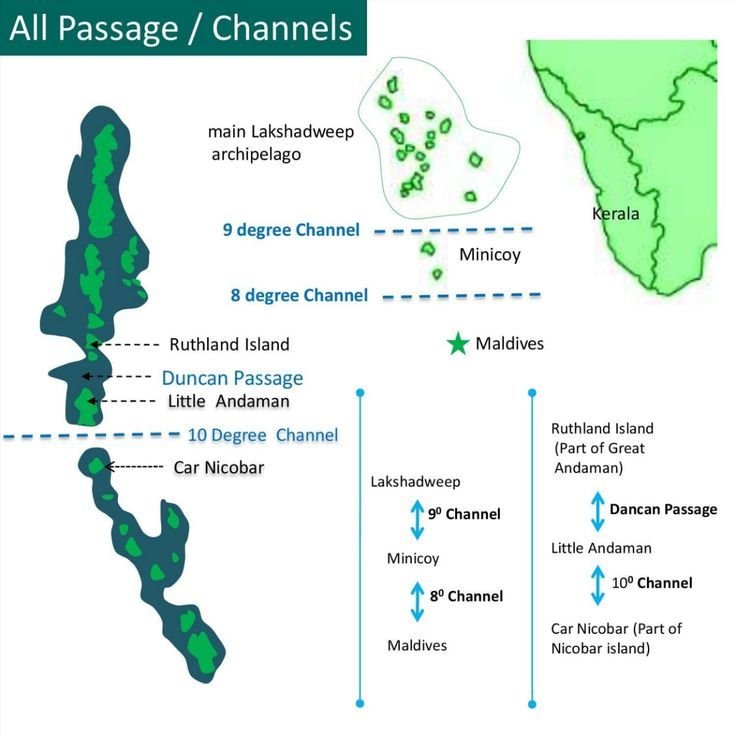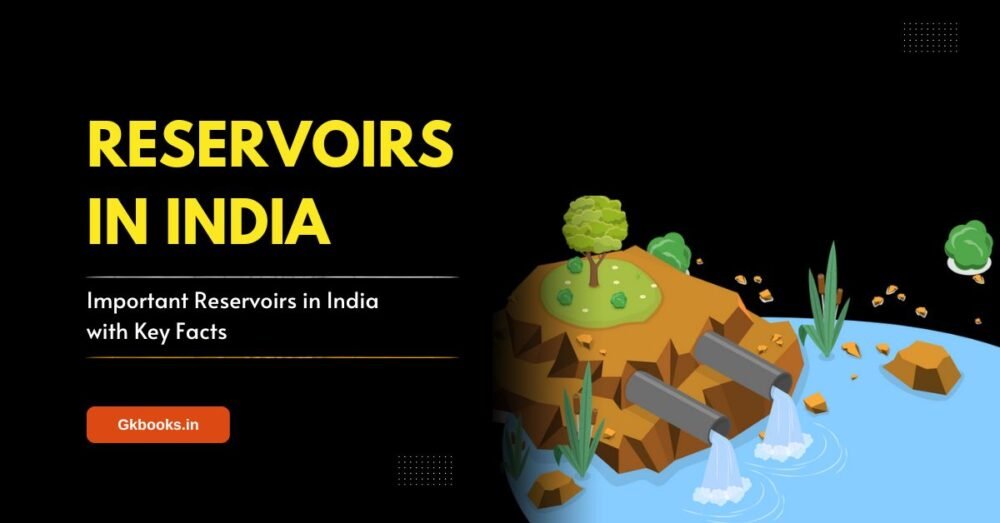The Eight Degree Channel marks the separation between Minicoy and the Maldives islands. Moving towards the Nine Degree Channel, it becomes the divide between Minicoy and the primary Lakshadweep archipelago. Further, the Ten Degree Channel is the boundary between the Andaman Islands and the Nicobar Islands within the Bay of Bengal.
✅ Explore the Complete List of Indian Geography Topics
What are Channels?
In simpler terms, a channel is like a wide water path that flows through two closely situated land masses. This is distinct from a strait, a narrower body of water connecting two larger bodies.
✅ Read Also: 8 Union Territories of India with Capital
According to National Geographic, the deepest part of a waterway or narrow water body that links two larger bodies of water is considered a channel.
Channels can exist through natural processes, such as glaciers carving deep canyons between landmasses. On the other hand, people can also create channels by digging through the bottoms of shallow waterways to create passages for large ships. It’s interesting to note how these water pathways are shaped either by nature or human intervention, playing crucial roles in connecting various island destinations.
Ten Degree Channel
- The Ten Degree Channel of Water is the boundary, dividing the Andaman Islands and the Nicobar Islands within the Bay of Bengal. Collectively, these island groups constitute the Indian Union Territory (UT) of the Andaman and Nicobar Islands.
- Stretching 150 kilometers from north to south and extending 10 kilometers from east to west, this water body maintains a minimum depth of 7.3 meters.
- Named after its location on the 10-degree line of Latitude, north of the equator, this geographical feature is commonly called the Ten-Degree Channel.

Nine Degree Channel
- The Nine Degree Channel plays a crucial role by separating the island of Minicoy from the primary Lakshadweep archipelago.
- The Union Territory of Lakshadweep is formed by the amalgamation of Kalpeni and Suheli Par, as well as Maliku Atoll and Amindivi Subgroup.
- Covering a width of 200 kilometers and reaching a depth of 2597 meters, this channel is notable for the presence of the submerged Investigator Bank in its southern region.
- This water passage is strategically significant for nearly all merchant shipping activities connecting Europe, the Middle East, and Western Asia with Southeast Asia and the Far East.
- The channel lies on the 9-degree line of Latitude, north of the equator, showcasing its geographical significance in global maritime trade.

Eight Degree Channel
- The Eight Degree Channel delineates the maritime boundary between India and the Maldives.
- Functioning as a natural divide, it separates the islands of Minicoy and the Maldives.
- Traditionally known as Maliku Kandu and Māmalē Kandu Divehi, this channel derives its name from its location on the 8-degree line of Latitude, north of the equator.
- This geographical feature holds significance for its role as a boundary and its cultural and navigational importance in the region.
Also Read: Lakshadweep Geography, Economy and Key Points: Complete Notes
8, 9, and 10 Degree Channel in a Nutshell
| Sl. No. | Channel | Location |
|---|---|---|
| 1 | Eight Degree Channel | Between Minicoy and Maldives islands |
| 2 | Nine Degree Channel | Separating Minicoy from Lakshadweep archipelago |
| 3 | Ten Degree Channel | Between Andaman Islands and Nicobar Islands |
Summary
In summary, the Eight Degree Channel is the divider between the islands of Minicoy and the Maldives, while the Nine Degree Channel separates Minicoy from the primary Lakshadweep archipelago.
The Ten Degree Channel is the boundary between the Andaman Islands and the Nicobar Islands in the Bay of Bengal. These channels are aptly named after their positions on the eight, nine, and ten-degree lines of latitude, north of the equator, emphasizing their geographical significance in the Indian Ocean region.
More Topics on Indian Geography:
Important Water Reservoirs in India with Key Facts: Complete Guide
Renuka Lake: Key Details about Smallest Ramsar Wetland Sites of India
Keibul Lamjao National Park: The World’s Only Floating National Park





